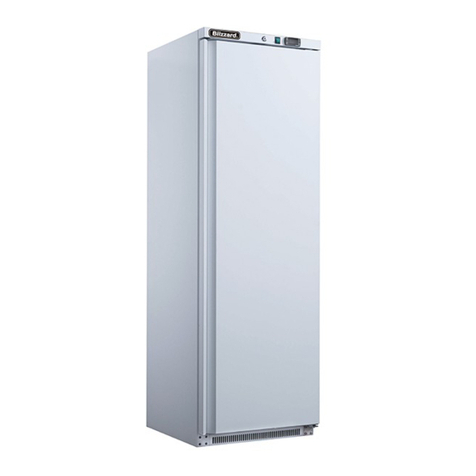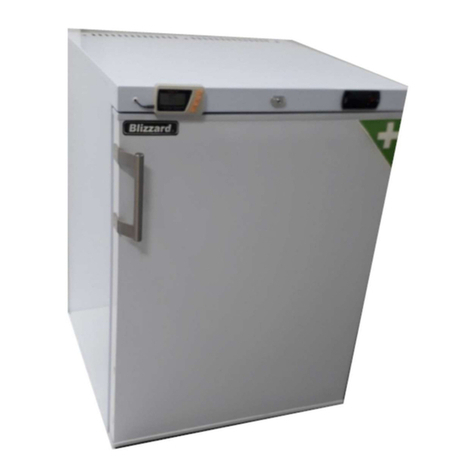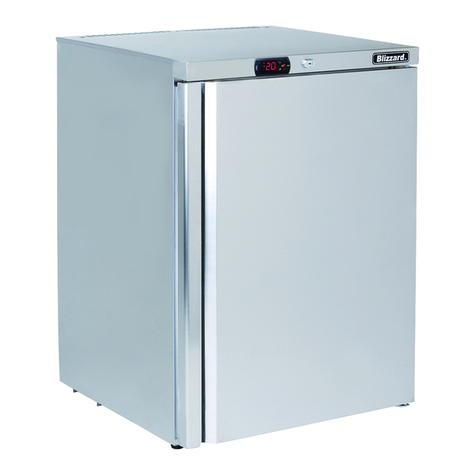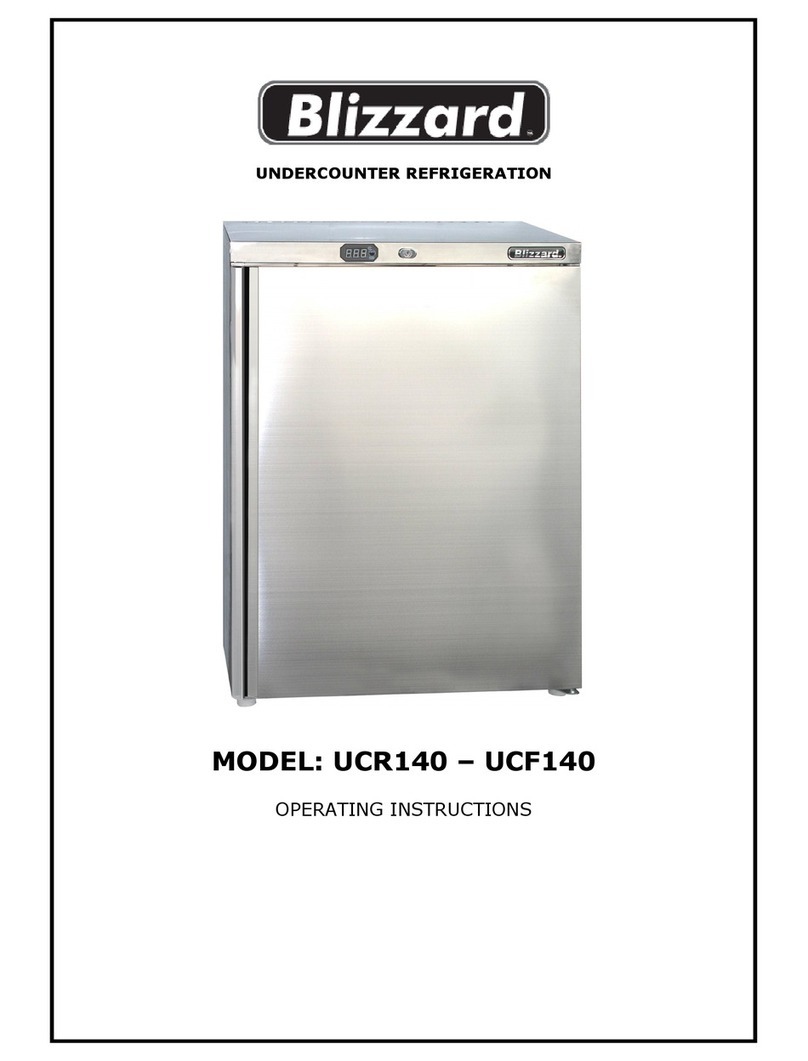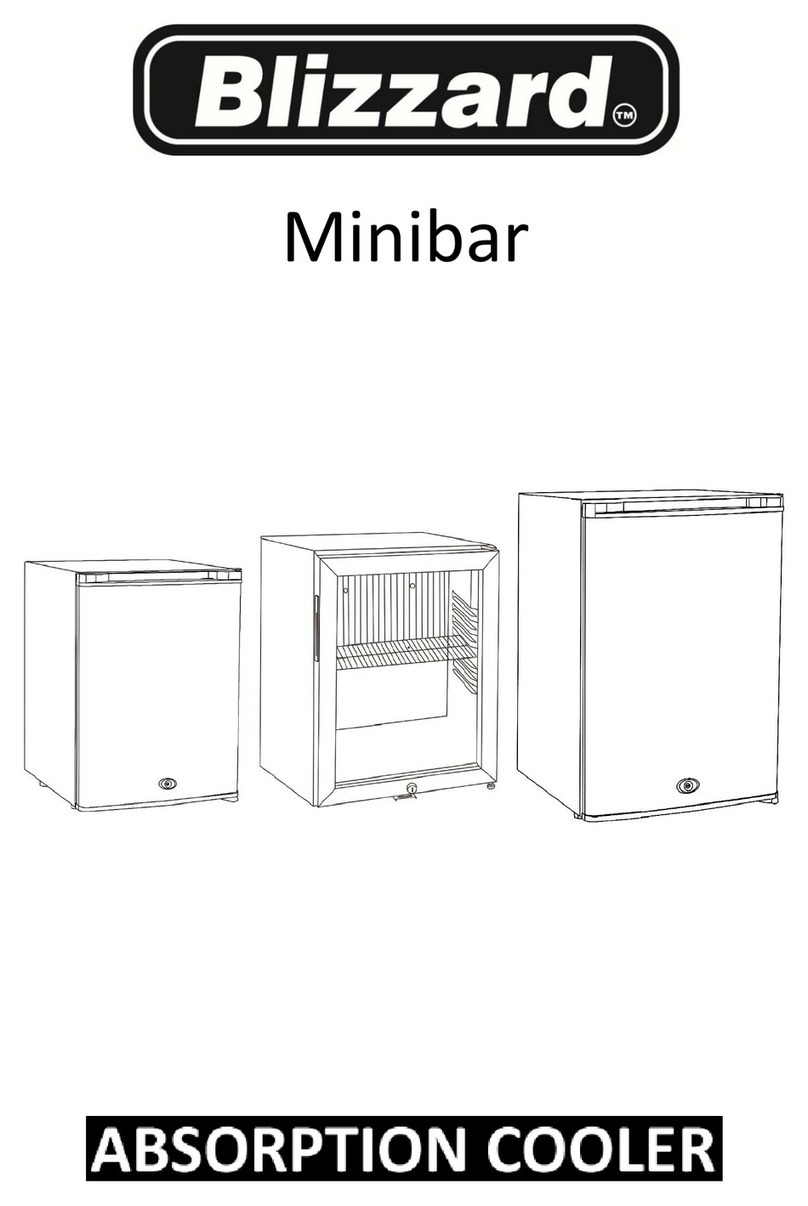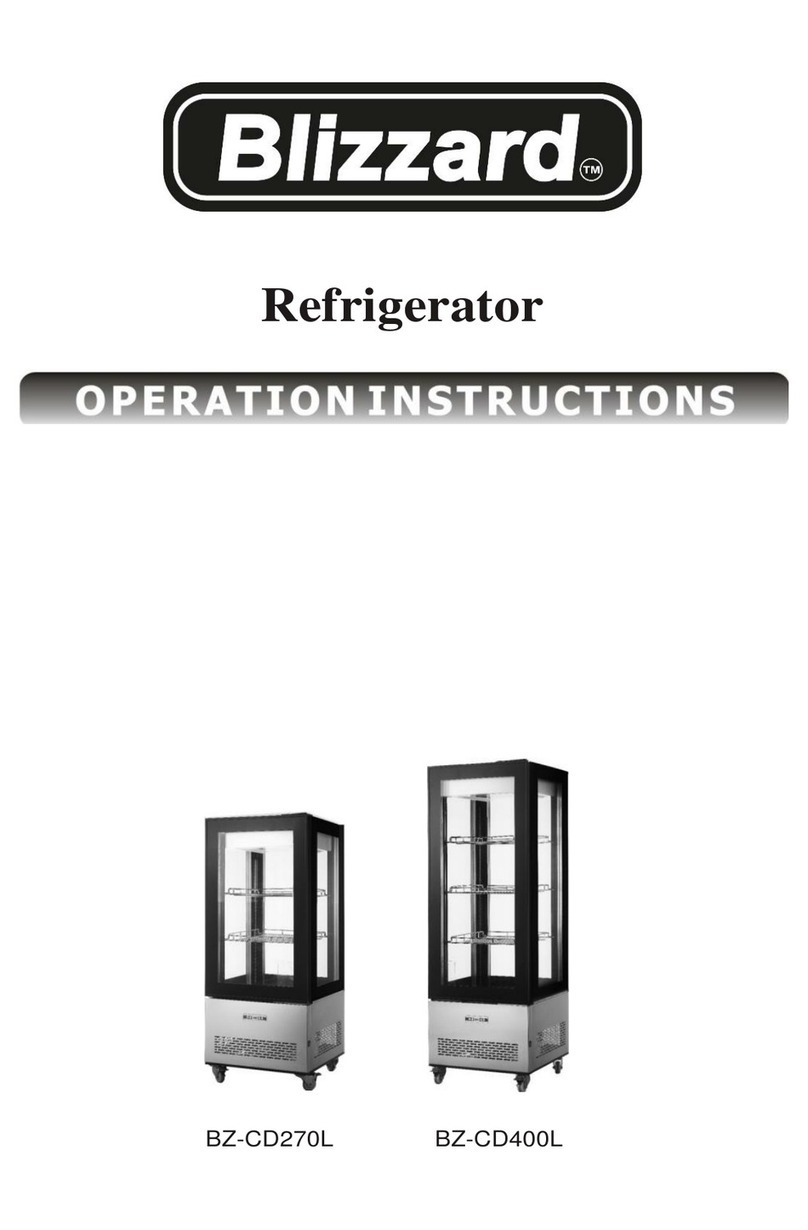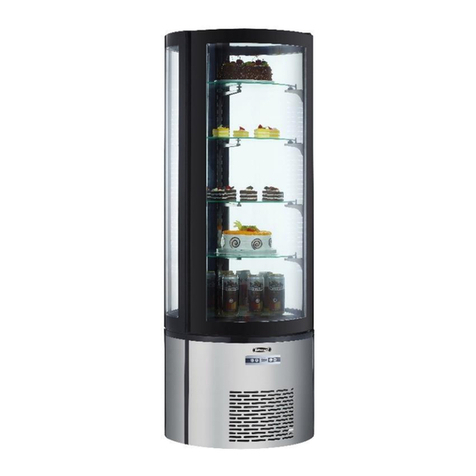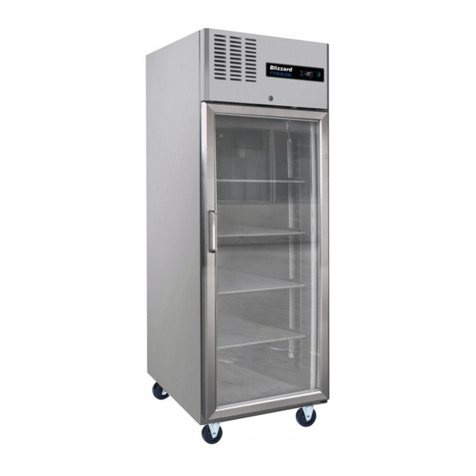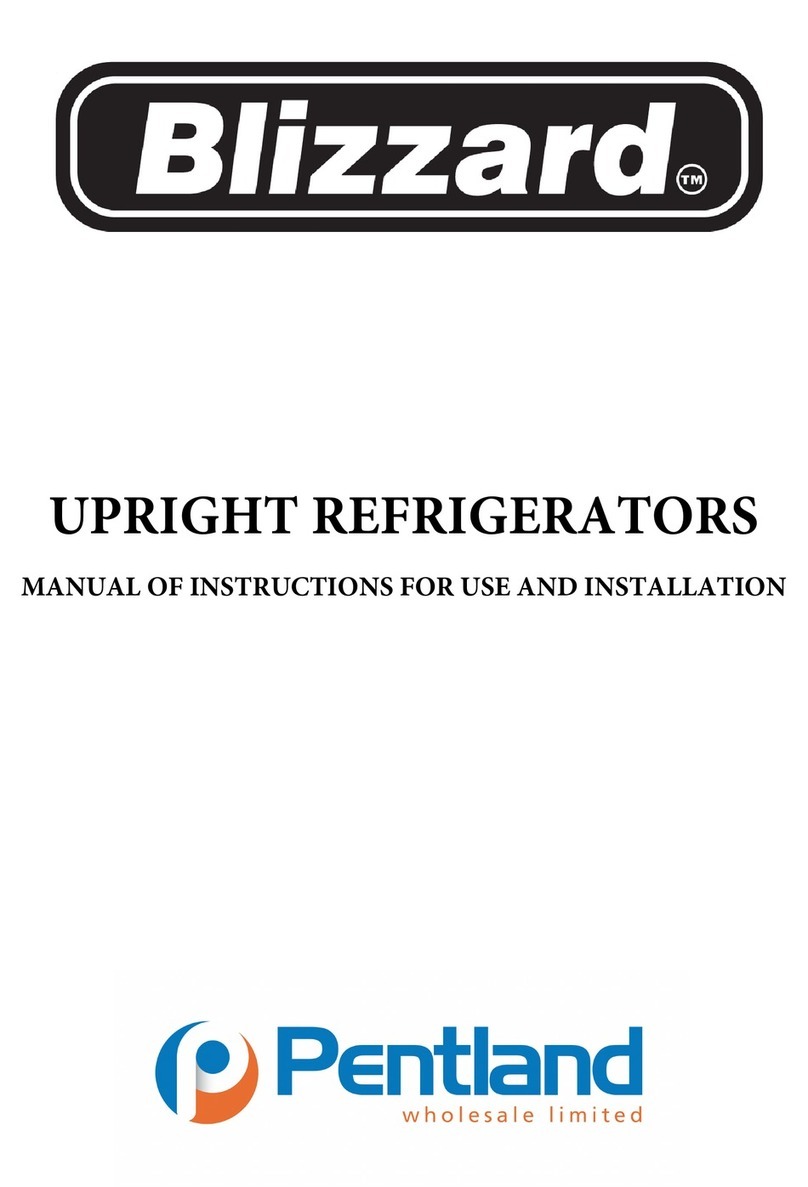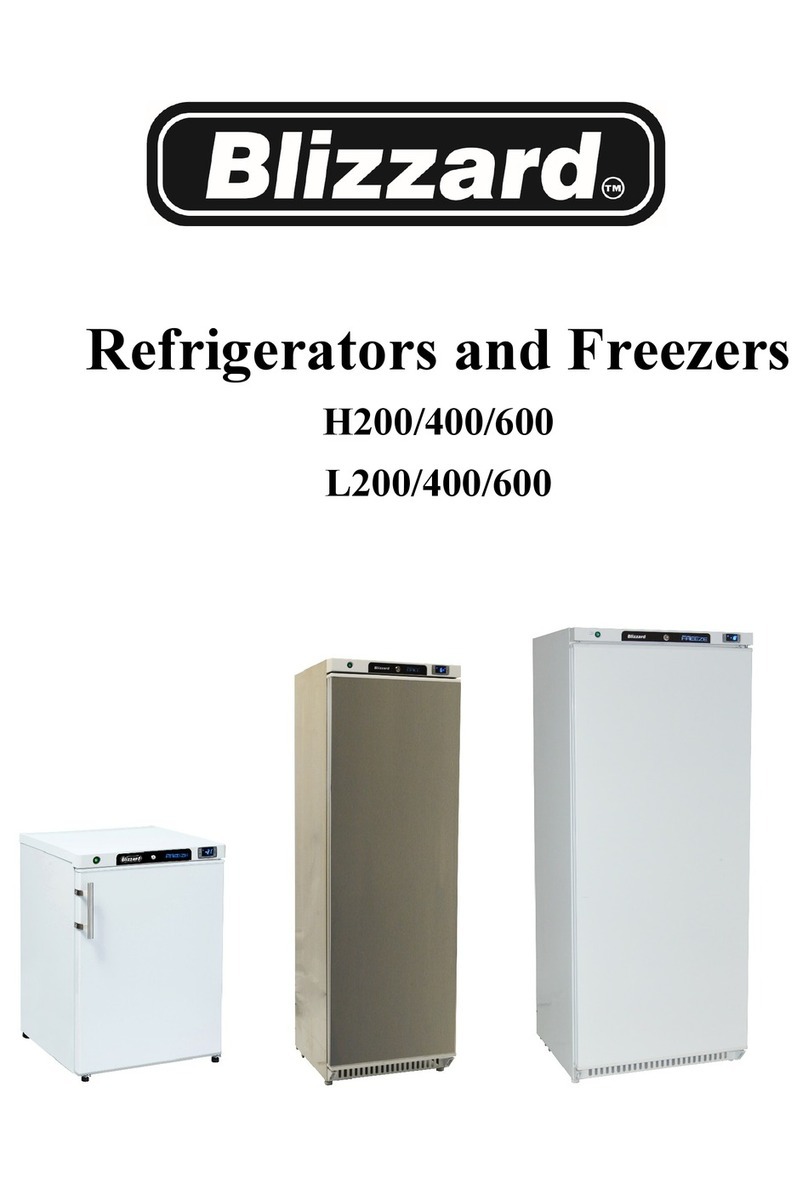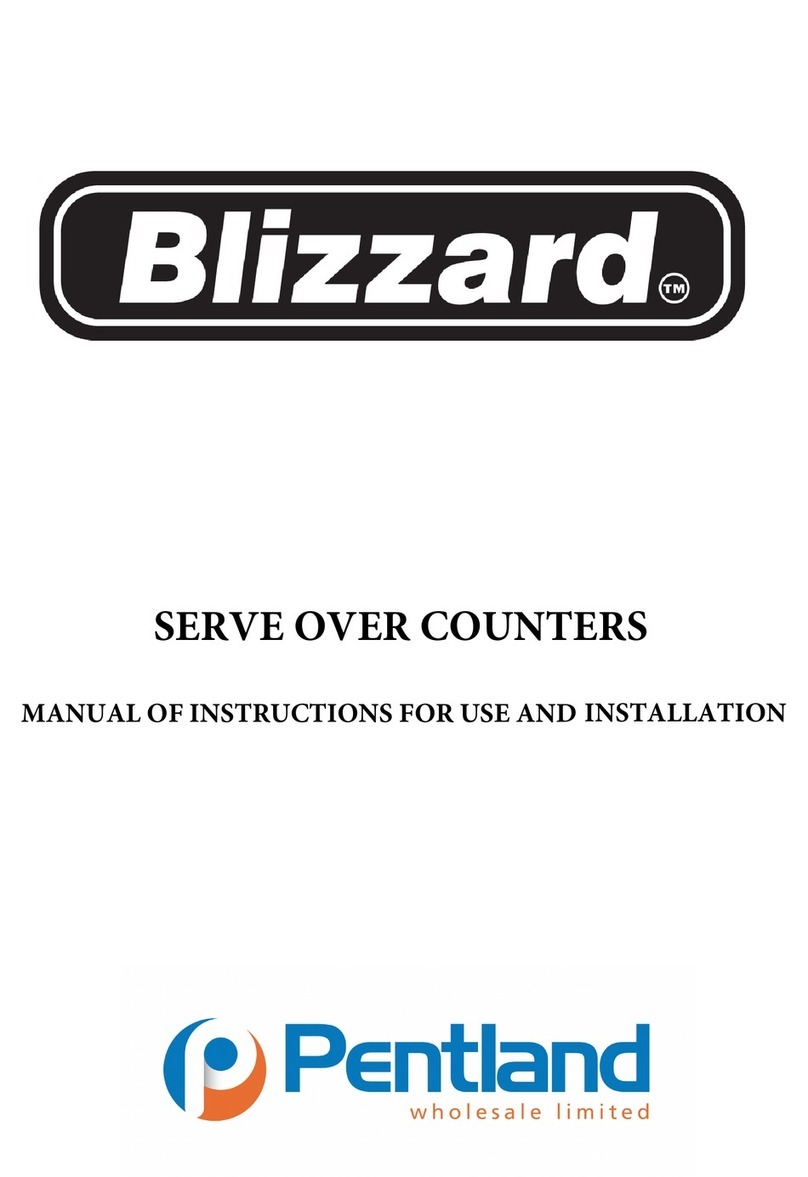4. Putting Into Operation
4.1. Positioning
Ensure before installation that the space reserved for the unit is adequate
to allow normal operation and maintenance. After carefully unpacking the
unit remove the PVC protective film and all other packaging materials
used to protect the equipment in transit.
Place the cabinet on a flat and even surface and use the adjustable legs to
level the unit ready for operation. The cabinet MUST only be lifted from
the exterior of the base to avoid the possibility of damage particularly
when using mechanical means to site.
Do not move the cabinet by pushing the work surface. If the unit has
been transported or stored in any position other than upright wait at least
2 hours before switching on.
The equipment must be installed in a suitable environment and not
exposed to open air or exposed to rain. The correct position to site the
unit is away from direct heat sources (radiators/cookers etc) and out of
direct sunlight and draughts. Ensure there is suitable ventilation around
the unit failure to adhere to these guidelines will result in adverse
performance or failure of your equipment.
4.2 Initial Cleaning
Before putting into operation all parts of the cabinet must be cleaned.
For the interior of the cabinets a solution of mild detergent and warm
water is recommended using a moistened cloth. Dry both the interior and
exterior of the cabinet with a soft dry cloth. Do NOT use harsh abrasive
detergents or cleaning materials such as scourers wire wool etc. Use
extra caution when cleaning moving parts with sharp edges such as
evaporator condenser etc and always use protective gloves.

